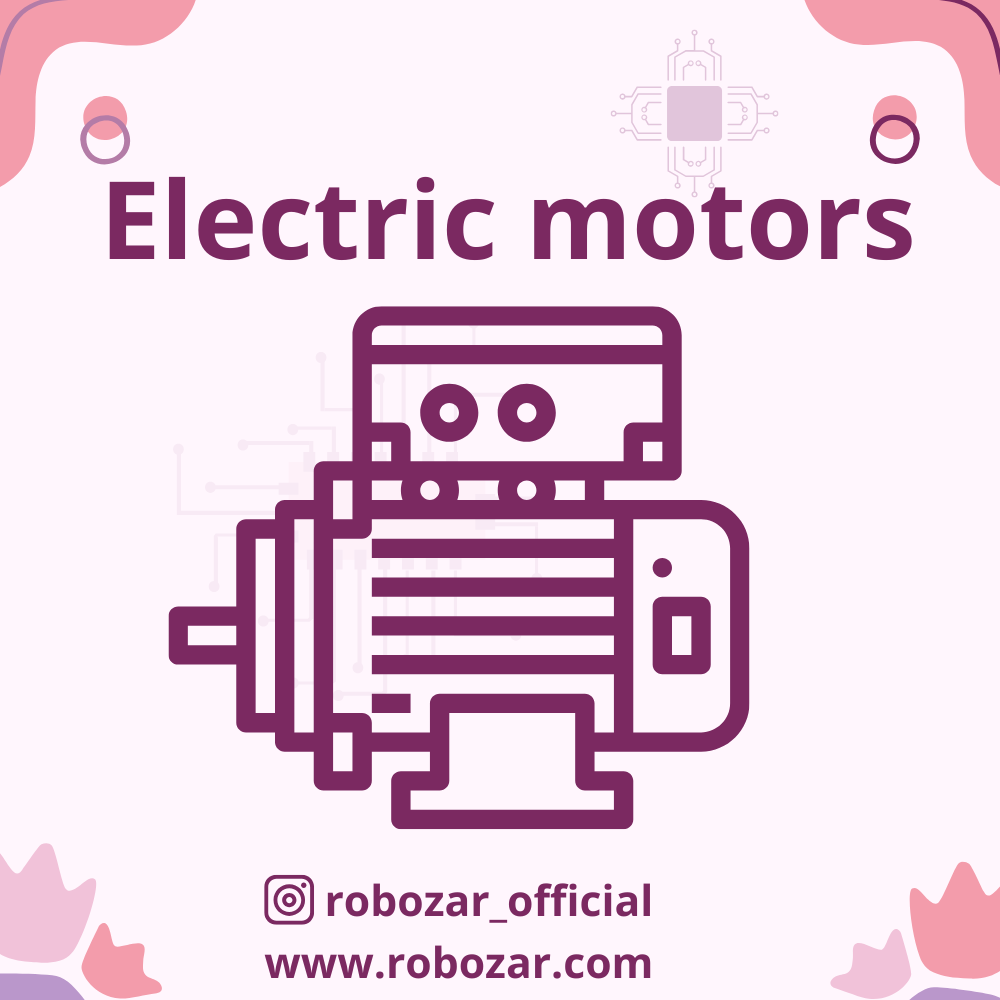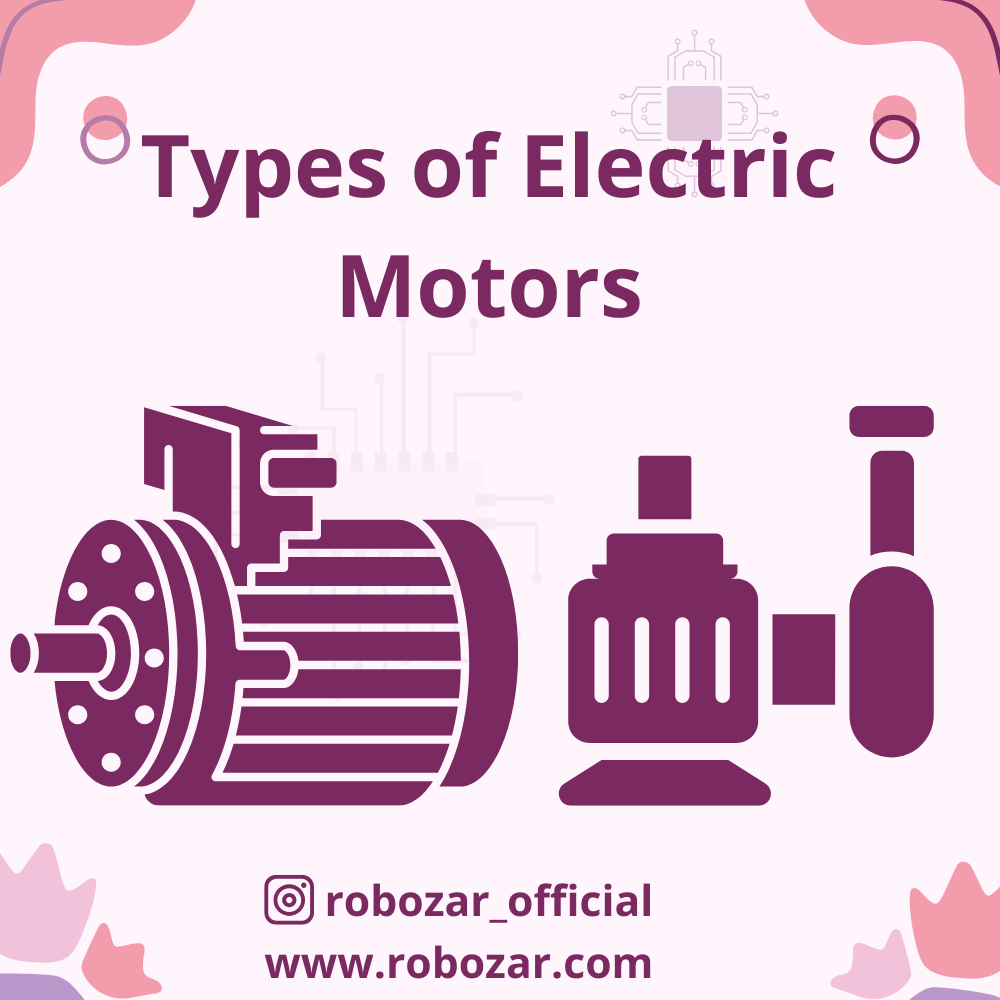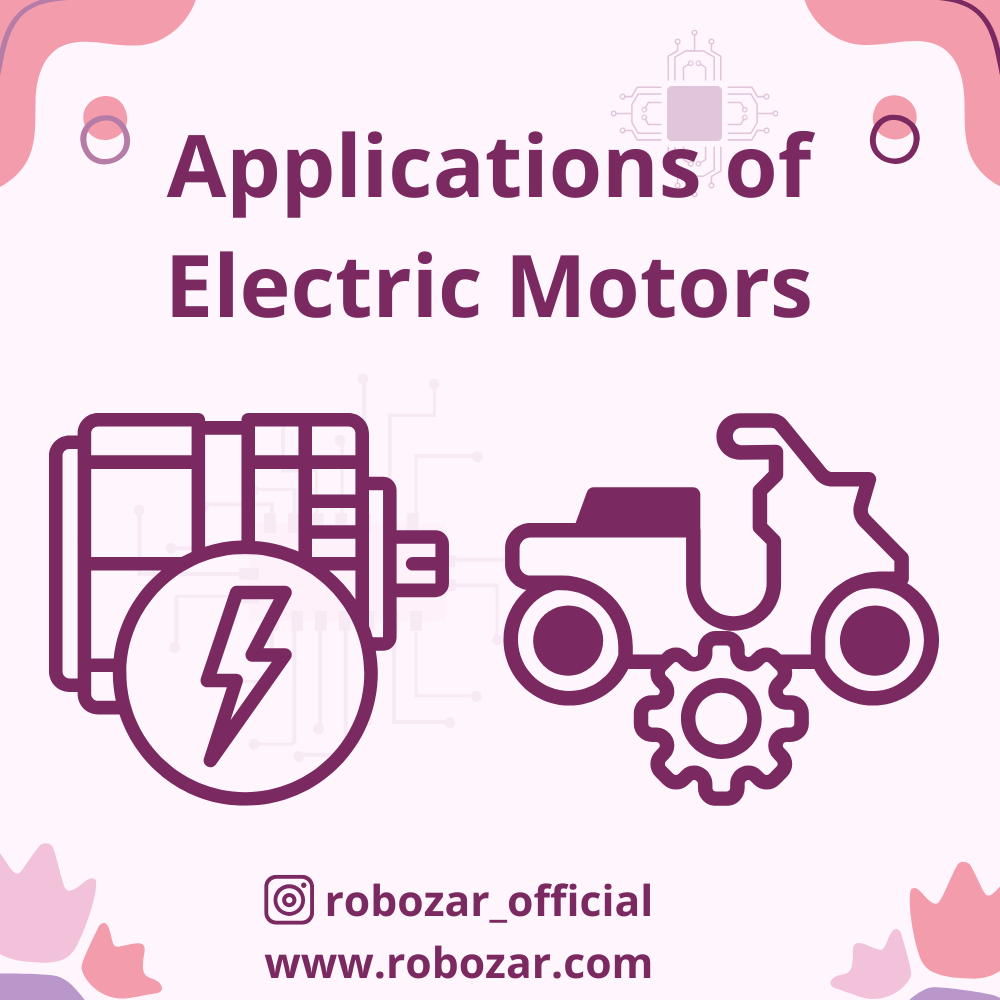5 powerful electric motor types: a complete guide
Contents
Introduction Electric motors
Electric motors are a cornerstone of modern technology, converting electrical energy into mechanical energy to power everything from household appliances to industrial machines. They are indispensable across industries, enabling innovation in manufacturing, transportation, robotics, and beyond. Electric motors vary widely in design, functionality, and application, each tailored to meet specific requirements for speed, torque, efficiency, and power.
Understanding the different types of electric motors helps engineers, technicians, and everyday users select the most suitable motor for a given application. From simple brushed motors to advanced synchronous and stepper motors, these devices come in numerous variations, each with unique characteristics.
This guide provides an in-depth look into the types of electric motors, their construction, working principles, applications, and advantages. By the end, you’ll clearly understand how these machines drive the modern world.
Electric motors are fundamental in modern technology, powering everything from household appliances to industrial machinery and electric vehicles. These remarkable devices convert electrical energy into mechanical energy, making them indispensable in countless applications. The diversity of electric motors available today is a testament to their versatility and ability to meet the specific needs of various industries.
The development of electric motors has been a transformative journey, with each type being tailored for distinct purposes. Their contribution to technological advancement cannot be overstated from the compact motors used in fans and washing machines to the robust motors that drive heavy machinery and electric cars. Electric motors are classified into several types based on their design, operation, and applications. Each type has its unique features, advantages, and limitations, making it suitable for specific tasks.
In this in-depth guide, we’ll explore the different types of electric motors, including their working principles, key characteristics, and real-world applications. Whether you’re an engineer, a student, or simply curious about how these devices work, understanding the different motor types will provide valuable insights into how electricity powers the world around us.

Powering innovation with precision ⚙️✨ Explore our range of electric motors, crafted for efficiency and reliability. #ElectricMotors #EngineeringExcellence #InnovationAtWork
Types of Electric Motors
Electric motors are broadly classified into AC Motors and DC Motors, based on the type of current they use. Let’s dive into each category and its subtypes.
1. AC Motors
AC motors operate on alternating current (AC) and are widely used for industrial and household applications due to their efficiency and reliability.
a. Synchronous Motors
- Working Principle: In synchronous motors, the rotor speed matches the stator’s magnetic field speed. This synchronization ensures precise control of speed and position.
- Applications: Used in clocks, conveyor systems, elevators, and compressors where consistent speed is essential.
- Advantages:
- High efficiency and performance.
- Precise speed control.
b. Induction Motors (Asynchronous Motors)
- Working Principle: The rotor in induction motors does not synchronize with the stator’s magnetic field. Instead, the rotor is induced by electromagnetic effects.
- Types:
- Single-Phase Induction Motors: Used in household fans, washing machines, and pumps.
- Three-Phase Induction Motors: Common in industrial machinery and heavy equipment.
- Applications: Widely used in industries, HVAC systems, and water pumps.
- Advantages:
- Simple design and low cost.
- High durability with minimal maintenance.
2. DC Motors
DC motors run on direct current and are known for their ability to deliver high torque at low speeds.
- Working Principle: Features a commutator and brushes to direct current through the motor’s windings.
- Applications: Toys, automotive applications (like windshield wipers), and small appliances.
- Advantages:
- Easy to control speed and torque.
- Low initial cost.
b. Brushless DC Motors (BLDC)
- Working Principle: Eliminates brushes and uses an electronic controller for commutation.
- Applications: Drones, electric vehicles, robotics, and computer cooling fans.
- Advantages:
- Higher efficiency and longer lifespan.
- Minimal maintenance.
- Working Principle: Uses permanent magnets instead of windings in the stator.
- Applications: Electric bicycles, treadmills, and portable devices.
- Advantages:
- Compact and lightweight design.
- High power-to-weight ratio.
d. Series and Shunt DC Motors
- Series Motors: Provide high starting torque and are used in applications like electric trains and cranes.
- Shunt Motors: Deliver consistent speed, ideal for lathes and machine tools.
3. Special-Purpose Motors
These motors are designed for specific applications and environments.
- Working Principle: Moves in discrete steps, with precise control over speed, rotation, and position.
- Applications: CNC machines, 3D printers, and robotics.
- Advantages:
- High precision.
- Excellent for applications requiring incremental movement.
b. Servo Motors
- Working Principle: Utilizes feedback systems to provide accurate control over motion and position.
- Applications: Robotics, camera autofocus, and conveyor belts.
- Advantages:
- High accuracy and responsiveness.
- Compact size and high torque.
c. Universal Motors
- Working Principle: Operates on both AC and DC power, typically found in small appliances.
- Applications: Drills, blenders, and vacuum cleaners.
- Advantages:
- Lightweight and compact.
- High-speed operation.
d. Linear Motors
- Working Principle: Creates motion in a straight line instead of rotational motion.
- Applications: Maglev trains, automated sliding doors, and precision manufacturing.
- Advantages:
- Smooth and precise motion.
- High-speed operation.

“Power in every form! 🌟 Dive into the fascinating world of electric motors—AC, DC, stepper, and servo—tailored for precision, efficiency, and innovation. ⚡ #ElectricMotors #TechSolutions #EngineeringMarvels”
Applications of Electric Motors
Electric motors are integral to numerous applications across various sectors. Here’s a detailed look at where these motors play a critical role:
1. Industrial Applications
- Manufacturing: Motors power conveyor belts, robotic arms, and assembly lines in factories.
- Pumps and Compressors: Induction motors are commonly used in industries for pumping fluids and compressing gases.
- Cranes and Hoists: DC motors are preferred for applications requiring high torque and precise control.
2. Automotive Industry
- Electric Vehicles (EVs): BLDC motors are extensively used in EVs for their high efficiency and performance.
- Power Steering: DC motors enable precise control in automotive power steering systems.
- Windshield Wipers and Fans: Small DC motors are used for auxiliary functions in vehicles.
3. Household Applications
- Appliances: Motors power washing machines, refrigerators, blenders, and air conditioners.
- Fans and Heaters: Induction motors are commonly used in ceiling fans, exhaust fans, and space heaters.
4. Healthcare and Medical Devices
- Prosthetics: Miniature motors are used in robotic prosthetics to provide precise movement.
- Medical Imaging: Stepper motors enable accurate positioning in devices like MRI machines.
- Ventilators and Pumps: DC motors are critical in life-support equipment.
5. Aerospace and Defense
- Aircraft Systems: Motors are used in actuators, landing gear, and control systems.
- Drones: BLDC motors power propellers for high efficiency and low noise.
6. Renewable Energy
- Wind Turbines: Electric motors are used to adjust the blade pitch and optimize energy generation.
- Solar Trackers: Stepper motors adjust the position of solar panels to maximize sunlight capture.
7. Consumer Electronics
- Computers: Small motors are used in hard drives and cooling fans.
- Gaming Equipment: Servo motors provide feedback in gaming controllers for enhanced user experience.

“From powering industries to enhancing daily life, electric motors drive the world forward. ⚡ Explore their incredible applications in machinery, vehicles, robotics, and more! #ElectricMotors #Innovation #TechnologyInMotion” “From powering industries to enhancing daily life, electric motors drive the world forward. ⚡ Explore their incredible applications in machinery, vehicles, robotics, and more! #ElectricMotors #Innovation #TechnologyInMotion”
Key Factors to Consider When Choosing an Electric Motor
- Application Requirements: Consider speed, torque, and power needs.
- Energy Efficiency: Opt for motors with high efficiency to reduce energy consumption.
- Environment: Ensure the motor can operate under specific environmental conditions (e.g., high temperatures or humidity).
- Maintenance Needs: Choose motors that align with your maintenance capabilities and budget.
Conclusion
Electric motors are the driving force behind countless technologies, from household devices to advanced industrial machinery. With such a wide variety of types and designs, there is an electric motor suited to nearly every application. AC motors dominate industrial settings with their efficiency and durability, while DC motors are favoured for portable and high-torque requirements. Special-purpose motors like stepper and servo motors cater to precision-demanding tasks, underscoring the versatility of electric motors.
The future of electric motors is bright, with advancements in materials, energy efficiency, and control systems paving the way for even greater performance and sustainability. Whether you’re selecting a motor for a personal project, industrial use, or cutting-edge technology, understanding the different types of electric motors empowers you to make informed decisions, ensuring optimal performance and reliability for years to come.
By delving into the details of AC motors, DC motors, synchronous motors, and specialized variants like stepper and servo motors, we can appreciate their diverse roles. Additionally, this knowledge is essential for selecting the right motor for a given application and optimizing performance, efficiency, and durability. As we progress through this guide, you’ll also learn how emerging technologies and innovations are shaping the future of electric motors, making them more efficient, sustainable, and adaptable to modern needs.
Electric motors are not just mechanical components; they are at the heart of the electrification revolution, driving the transition to cleaner energy and sustainable technologies. Join us as we uncover the fascinating world of electric motor types, their design intricacies, and their critical role in powering the devices and systems that define our everyday lives.
You may like this also
5 powerful insights into passive infrared sensor technology
10 powerful insights into microprocessors: the brain of modern technology
5 top powerfull key insights into printed circuit boards: the foundation of modern electronics
